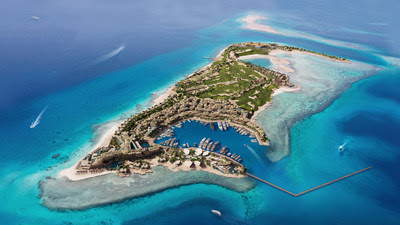RIYADH, Saudi Arabia, Dec. 5, 2022 /PRNewswire/ — This is a report from Hong Kong Commercial Daily:
As the “2022 Qatar World Cup” kicks off in the wealthy Arab country Qatar, more and more people are paying attention to the friendly relationship between Saudi Arabia and China.
Saudi Arabia, located on the Arabian Peninsula in western Asia, is the birthplace of Islam and the location of the two holy cities, Mecca and Medina. It is also the only Arab country in the G20, and has important Influence in the Arabic and Islamic world.
From Tang Dynasty to Yuan Dynasty for 900 years, the Arab Empire and China had engaged in open and close exchanges in terms of politics, commerce and trade. However, due to various reasons, the political and trade exchanges between the two sides almost stopped around 1500 AD.
In modern times, especially when Saudi Arabia and China re-established formal diplomatic relations on July 21, 1990, a new chapter has been opened for the friendly exchanges between the two sides.
Since the establishment of diplomatic relations, the bilateral relations between Saudi Arabia and China have developed in an all-round way, involving various fields of politics, economy, military, religion and culture. In the economic, trade and technological cooperation between the two countries, Saudi Arabia has been mainly exporting oil products and its exploration and refining technologies to China, while the China has been mainly exporting light industry commodities and agricultural products, such as textiles, clothing, sugar, and tea, and etc., to Saudi Arabia.
Although the two countries established diplomatic relations relatively late, bilateral relations have developed rapidly in recent years.
In the 21st century, the development of Saudi Arabia-China relations has entered a fast track, with frequent high-level visits between the two countries.
In 2016, Saudi Arabia and China established a comprehensive strategic partnership and established a high-level joint committee between Saudi Arabia and China, highlighting the importance of the relationship between the two countries and marking the high level of development of their relationship.
From December 20, 2016 to March 19, 2017, the “Roads of Arabia: Archaeological Treasures of Saudi Arabia” was co-sponsored by the Saudi Commission for Tourism and National Heritage, the State Administration of Cultural Heritage of China and the National Museum of China, undertaken by the China Cultural Relics Exchange Center, and on display at the National Museum of China. Chinese state leader and King Salman of Saudi Arabia jointly attended the closing ceremony of the exhibition. In his speech at the closing ceremony, the Chinese state leader pointed out that this exhibition is an achievement of promoting cultural exchanges and people-to-people bonds between the two sides, and it is also an important manifestation of the comprehensive strategic partnership between China and Saudi Arabia. King Salman said that the exhibition will help deepen the cultural understanding between the two countries and contribute to the development of human civilization. He is willing to work with China to jointly promote the development of Saudi-Chinese relations.
In 2016, the Saudi government announced the “Vision 2030” reform plan, which aims to promote domestic economic transformation and diversified development. In March 2017, one of the important issues during King Salman’s visit to China was to align development strategies with China, and to use this as a basis to promote cooperation between the two countries in various fields such as energy, finance, production capacity, and infrastructure construction.
The economies of China and Saudi Arabia are highly complementary. The two countries have strengthened the connection between the Belt and Road Initiative and Saudi Arabia’s “Vision 2030” strategy, and the cooperation in the fields of economy, trade, production capacity, finance, and infrastructure construction has continued to develop in depth. At present, Saudi Arabia has become one of China’s largest crude oil suppliers, and has been China’s largest trading partner in West Asia and Africa for many years.
In recent years, the mutual visits between the leaders of the two countries and the establishment of a comprehensive strategic partnership and the China-Saudi Arabia High-Level Joint Committee have injected new and strong impetus into the development of China-Saudi Arabia relations in the new era. The two countries have achieved fruitful cooperation in the fields of energy, economy, trade, investment, and high technology within the framework of the Belt and Road Initiative, and the people-to-people and cultural exchanges have become increasingly close. In the face of the COVID-19 pandemic, Saudi Arabia and China have helped each other to overcome difficulties, and cooperated closely in providing assistance, epidemic prevention and control, and scientific research, writing a new chapter in the joint fight against the epidemic.
2022 is the 32nd anniversary of the establishment of diplomatic relations between Saudi Arabia and China. After 32 years of development, China-Saudi Arabia relations have become a model of mutual respect, mutual benefit and win-win relationship between countries.
Looking into the future, the people of Saudi Arabia and China are full of confidence in the prospects for the development of friendship between Saudi Arabia and China. The two sides regard each other as development opportunities, support each other’s peaceful development, and jointly maintain regional and world peace and stability.

